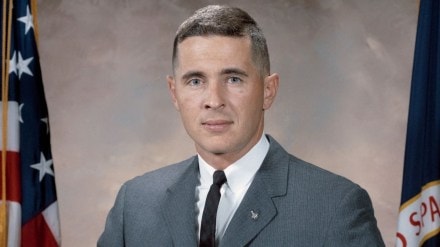William Anders, the Apollo 8 astronaut who took the iconic Earthrise photo in 1968, died on Friday in a plane crash.
The 90-year-old retired Major General was piloting a plane alone when it tragically plummeted into the waters off the San Juan Islands in Washington state. His son, retired Air Force Lt. Col. Greg Anders, confirmed the death to The Associated Press.
Anders was a graduate of the US Naval Academy and an Air Force Pilot and he joined NASA in 1963 as part of the third group of astronauts. He was a crew member on the historic Apollo 8 mission launched on December 21, 1968. His mission was the first crewed expedition to leave Earth’s orbit and travel 240,000 miles (386,000 km) to the Moon.
On the Apollo 8 crew, Anders was the “rookie” alongside Frank Borman, the mission commander, and James Lovell, who had previously flown with Borman on Gemini 7 in 1965 and would later command the ill-fated Apollo 13 mission.
Originally scheduled for 1969, Apollo 8 was moved up due to concerns that the Russians were accelerating their plans for a lunar mission. This shift left the crew with only a few months to prepare for the highly risky and historic endeavor.
During the mission, Anders took one of the most iconic photographs in history, capturing Earth rising over the lunar horizon. He described Earth as appearing fragile and physically insignificant, yet profoundly home.
Iconic ‘Earthrise’ photo
“We’d been going backwards and upside down, didn’t really see the Earth or the Sun, and when we rolled around and came around and saw the first Earthrise,” he recalled.
Anders also played a crucial role in another memorable moment from that Christmas Eve mission, beginning the crew’s reading from the Book of Genesis while Apollo 8 transmitted images of the lunar surface back to Earth.
The three astronauts were celebrated as national heroes when they splashed down in the Pacific Ocean three days later and were honored as Time magazine’s “Men of the Year.”
